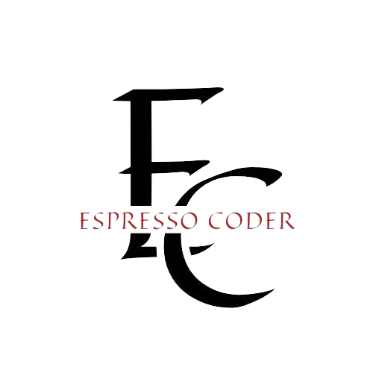Contents
Quick answer
Duaction is a dual-learning model that combines theory and practical application in real-time. It boosts engagement, improves skill retention, and prepares learners for real-world challenges. Popular in corporate, medical, and vocational settings, duaction is reshaping modern education and training.
Duaction: The Future of Learning by Doing
In today’s fast-evolving world, traditional education and training often struggle to keep pace with real-world demands. Learners may absorb theory, but lack the confidence or experience to apply it effectively.
Enter duaction—a new paradigm that bridges this critical gap. Duaction fuses academic instruction with practical, hands-on experience. It creates an immersive environment where learners “learn by doing,” gaining not just knowledge but competence.
This long-form guide explores what duaction is, why it works, how to implement it, and what tools you’ll need. Whether you’re an educator, a corporate trainer, or an instructional designer, this post gives you the insights and steps to apply duaction effectively.
Ready to close the gap between knowing and doing? Let’s dive in.
Key Facts About Duaction
| Key Element | Details |
|---|---|
| Definition | A dual-model learning method combining theory and practice |
| Core Focus | Experiential learning, immediate application, continuous feedback |
| Primary Benefit | Improves knowledge retention and real-world skill development |
| Adoption Areas | Education, corporate training, healthcare, vocational programs |
| Main Tools | VR/AR simulations, LMS platforms, real-time feedback systems |
| Key Metric | Learners retain up to 75% of knowledge when they “learn by doing” |
What Is Duaction?
Duaction is a blend of “dual” and “action,” signifying a dual-track learning model that integrates:
- Theory-based instruction (classroom, lectures, reading)
- Practice-based engagement (projects, simulations, real-world application)
The model is anchored in three essential principles:
1. Experiential Learning
Learners actively participate in tasks, simulations, or problem-solving rather than passively consuming information.
2. Immediate Application
Skills are applied almost immediately after learning, reinforcing understanding and relevance.
3. Continuous Feedback
Timely and constructive feedback supports iterative growth, improving outcomes.
Why Duaction Is Gaining Popularity
Duaction addresses several weaknesses of traditional training systems. Here’s why more institutions are adopting it:
1. Improves Knowledge Retention
- Learners retain 75% of what they do (vs. just 10% of what they read).
- Duaction reinforces memory through real-time engagement.
2. Promotes Transferable Skills
- Encourages development of critical skills like:
- Problem-solving
- Time management
- Technical execution
- These are directly usable in real-life environments.
3. Bridges the Theory-Application Gap
- Learners often struggle to apply theory to practice.
- Duaction removes this gap by merging them from day one.
4. Increases Motivation & Engagement
- Real-world simulations feel more meaningful.
- Learners feel ownership of their growth and success.
5. Supports Lifelong Learning
- Continuous feedback fosters a growth mindset.
- Learners are encouraged to adapt, experiment, and evolve.
Duaction in Action: Real-World Examples
Let’s explore how various sectors are leveraging duaction today:
1. Corporate Training (Tech & Business)
- Microsoft and IBM use duaction in software bootcamps.
- Learners review code theory, then solve live debugging challenges.
2. Medical Education
- Johns Hopkins uses patient simulators to teach procedures alongside anatomy classes.
- Students diagnose virtual patients in real-time.
3. Vocational & Skilled Trades
- Automotive schools offer apprenticeships split between:
- In-class mechanics theory
- Garage-based vehicle servicing
4. Leadership & Management Workshops
- Business schools use duaction in capstone simulations.
- Students manage virtual companies post-strategy lessons.
How to Integrate Duaction into Your Programs
Transitioning to duaction doesn’t mean discarding everything. Here’s a step-by-step integration plan:
1. Reevaluate Your Curriculum
- Identify theory-heavy modules.
- Introduce hands-on labs, role plays, or scenario tasks.
2. Use Immersive Technologies
- Implement VR/AR tools like Labster, zSpace, or Nearpod.
- Use platforms that simulate realistic job environments.
3. Blend Online and In-Person Learning
- Adopt hybrid structures:
- Online lectures → In-person workshops
- Web-based theory → Field studies
4. Promote Peer-Based Learning
- Use group projects, peer reviews, and team challenges.
- Peer-led sessions reinforce duaction principles naturally.
5. Build Feedback Mechanisms
- Train educators to:
- Provide instant feedback
- Adjust activities in real-time
- Use digital performance dashboards
6. Track Practical Outcomes
- Use KPIs like:
- Task accuracy
- Application speed
- Learner confidence
- Assess both theoretical understanding and practical application.
Tools and Resources for Duaction
Here are recommended platforms and tools to launch or upgrade your duaction system:
Learning Platforms
- Moodle – Open-source LMS with plug-ins for blended learning.
- Blackboard – Combines academic content with simulation features.
Simulation Tools
- Labster – STEM-based virtual labs.
- Nearpod – Interactive classroom tool for formative assessments and simulations.
Project-Based Resources
- Edutopia.org – Case studies and guides for real-world learning.
- ProjectLeadTheWay.org – Curriculum support for K–12 STEM education.
Training Consultants
- Partner with experts specializing in experiential learning and instructional design.
- Outsource design of duaction-aligned workshops or capstone projects.
Conclusion
Duaction is not just a trend—it’s a powerful educational shift that equips learners with the confidence, skills, and adaptability needed in today’s dynamic world.
By bridging the gap between knowing and doing, it prepares students and professionals to take on challenges with real-world competence.
FAQs
What is the meaning of duaction in education?
Duaction refers to a learning method that integrates theoretical knowledge with practical, real-world application for deeper understanding.
How is duaction different from traditional learning?
Traditional models separate theory and practice. Duaction merges them, allowing learners to apply concepts immediately as they learn them.
Is duaction suitable for online learning?
Yes. Duaction can be implemented in virtual formats using simulations, interactive modules, and real-time feedback systems.
What types of learners benefit from duaction?
Duaction works well for hands-on learners, career-focused students, and adult learners seeking job-ready skills.
Can duaction be applied in primary or secondary schools?
Absolutely. Many schools already use project-based learning, a core component of duaction.

